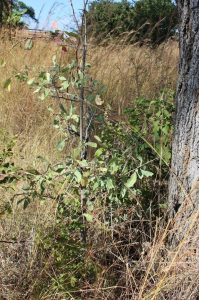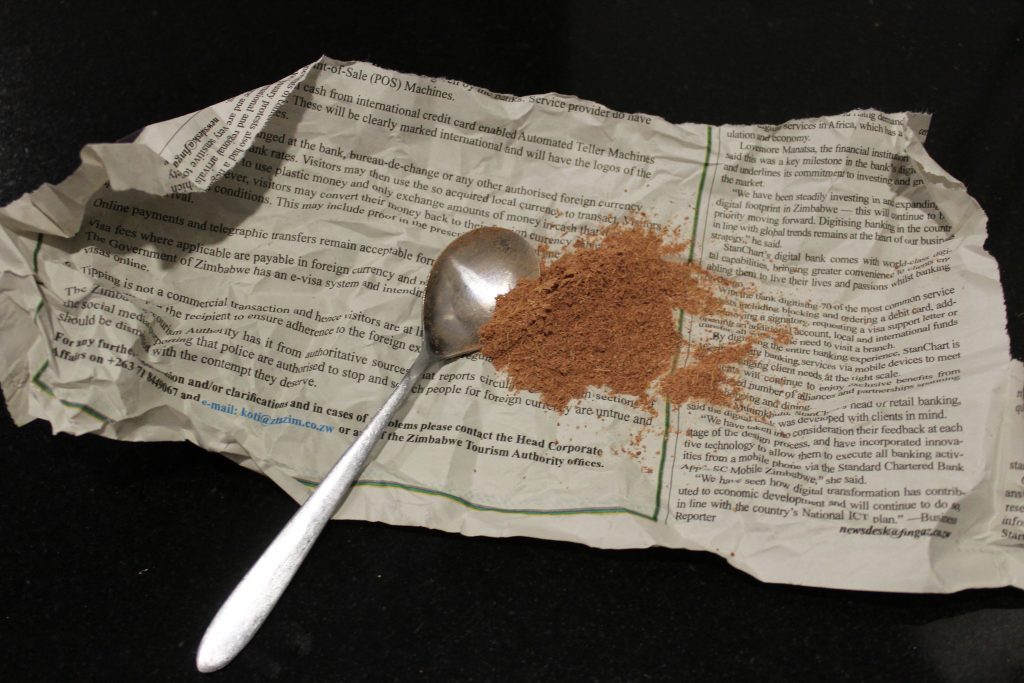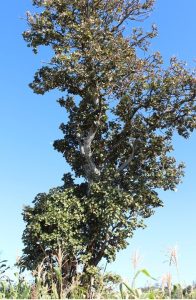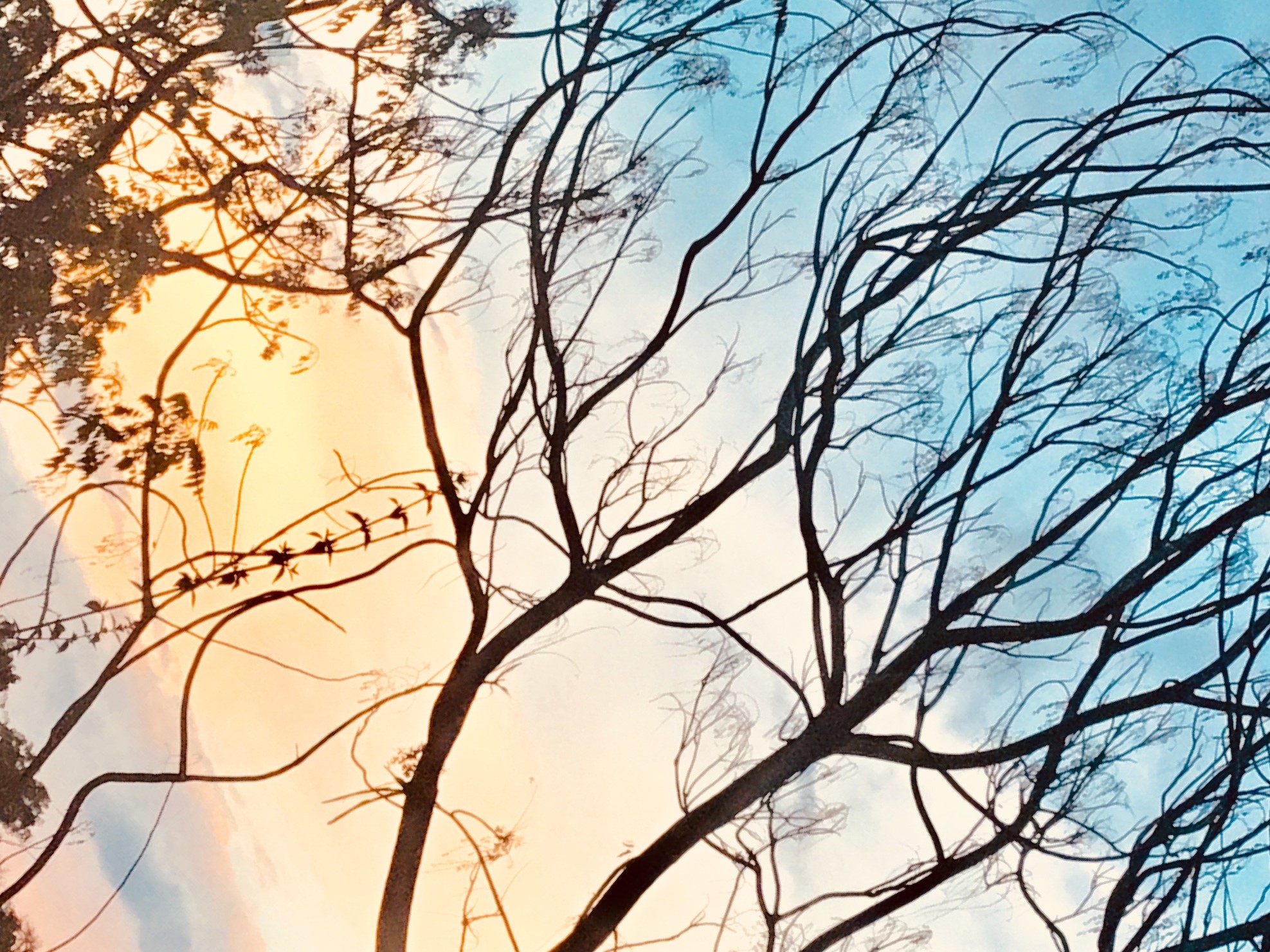In many parts of Zimbabwe, reliance is still placed on traditional medicines due to their affordability and ease of access. In some cases, there are cultural and spiritual considerations that come into play. Below are 50 plants that are used to treat various diseases and ailments.
1. Mugan’acha
lannea discolor
An infusion of the bark and roots is used to treat fevers and constipation in children. Fibre extract is drunk to reduce the duration of menstrual flow, and root extract is used as an eye-drop for sore eyes.
The tree produces a grape-like fruit which is eaten fresh. Another non-medicinal use is for fencing poles made from the wood. The poles easily take root and flourish again.
2. Mutsambatsi
lannea edulis
Root extract is drunk as bilharzia, diarrhoea, and gonorrhoea medicine. The tree produces an edible grape-like fruit.
3. Mumango
mangifera indica
The mango, a juicy stone fruit, is commonly eaten in Zimbabwe. Tender leaves of the mango tree are used as a remedy for all kinds of respiratory problems. Extract from the tree’s bark is drunk as a remedy for diarrhoea and dysentry.
4. Mubedu
ozoroa insignis
Root extract is drunk as diarrhea and Sexually Transmitted Infections (STI) medicine. The tree produces an edible fruit which is small, kidney-shaped and raisin-like. When ripe, the fruit is black and wrinkled.
5. Mufokosiyana
rhus longipes
Root extract is drunk as a remedy for infertility in women, and to dilate the birth canal.
searsia pyroides
Root extract is drunk as cough medicine.
searsia tenuinervis
Leaf extract is drunk as a remedy for heavy and prolonged menstrual bleeding.
6. Mupfura
sclerocarya caffra
The roots are crushed and boiled, and the steam directed into sore eyes. The tree produces an edible fruit which is fleshy, plum-like, and pale green turning yellow when ripe.
7. Mubikasadza
searsia dentata
The leaves are chewed while fresh, and the sap is swallowed. It is a remedy for ulcers, diarrhoea and stomach problems. The tree’s fruit is shiny red when ripe.
8. Muroro
annona stenophylla
Root paste is applied on boils, and the extract is drunk as a remedy for chest pains and STIs. The roots can also be mixed with mufufu roots, and sprinkled around the homestead as a snake repellent.
9. Muruguru
carissa bispinosa, carisa edulis
Root extract is drunk as cough and diarrhoea medicine. The tree produces an edible fruit.
10. Chirindamatongo
catharanthus roseus
Root extract is drunk as a remedy for stomach problems, including diarrhoea, dysentery and indigestion.
11. Rukato
asparagus africanus
Root extract is drunk as diarrhea and pneumonia medicine, and to dilate birth canal.
12. Konje
sansevieria aethiopica
The leaves are put into a fire so that the sap exuded is squeezed into a painful ear.
13. Mushayamhanda
sansevieria hyacinthoides
The plant has quite a number of common uses.
Leaf or rhizome sap is given to a dehydrated child. The leaf can be used as dressing on a sprained ankle, and can be macerated and given to a colicky infant.
The rhizome is added to non-alcoholic beverages taken by pregnant women to dilate the birth canal and prevent delivery complications. The roots are also used to dilate the birth canal.
Warm rhizome extract is given to a person with an aching tooth to keep in the mouth for up to two minutes before spitting out the mixture.
14. Gavakava
aloe greathedii
Leaf extract is drunk as a remedy for constipation, and veneral diseases especially gonorrhea.
15. Mupasa
brachylaena discolor
Leaves are chewed and juice swallowed as a remedy abdominal disorders, primarily ulcers.
16. Chifumuro
dicoma anomala
Bulb extract is drunk as a remedy for a wide range of illnesses. The bulb is commonly tied on a string and worn around the neck, waist or wrist of a child to protect against ‘spiritually induced’ illnesses. This plant is believed to counteract or expose (fumura) spells.
17. Ruhwahwa
schkuhria pinnata
This is a herb used for a variety of ailments. An infusion of the plant is drunk to treat stomach pains, sexually transmitted infections, and for abortion.
18. Rurimirwemombe
sonchus oleraceus
The herb’s leaf extract is drunk as a remedy for stomach problems.
19. Mupepe
commiphora marlothii
Mupepe is a small to medium-sized tree. The tree’s root extract is drunk as STI medicine.
20. Chizhuzhu
gymnosporia buxifolia
The leaves are chewed and sap swallowed as remedy for abdominal pains.The chizhuzhu shrub is also common for its use in rituals associated with ridding witchcraft.

21. Muchakata
parinari curatellifolia
Root extract is drunk as constipation medicine, and teeth are washed with root decoction as a remedy for toothache.
The tree produces a much sought after fruit – chakata/ hacha, and inspired a common Shona proverb, Totenda maruva, tadya chakata (We will only appreciate the tree’s blossoms after enjoying the (chakata) fruit.) The proverb warns against counting on something that is yet to happen.

22. Mutunduru
garcinia buchananii
Bark extract is drunk to reduce the birth canal. The tree’s fruit is fleshy, spherical, and yellow when ripe. It is eaten as an aphrodisiac.
23. Muchacha
cucumis anguria
Pieces of fruit are left around the home as a snake repellent. The tender leaves of the plant are cooked as spinach.
24. Furi
coleochloa setifera
This is a grasslike plant. The root powder is taken as a remedy for pneumonia.
25. Musumhadombo
diospyros lycioides
Root extract is drunk as a remedy for infertility in women.
26. Musumha
diospyros mespiliformis
Root extract is drunk as abdominal pain medicine.
27. Muvhinji
euclea crispa
Root extract is drunk as cough medicine. In addition, the fruit of the plant is edible.
28. Mushangura mudiki
euclea divinorum
Root extract is drunk as diarrhea medicine, or as a remedy for a troubled or growling stomach. In addition, the fruit of the plant is edible.
29. Musimbiti
androstachys johnsonii
Root extract is drunk as an aphrodisiac. The tree also has a reputation for wood that is extremely hard and durable. It is commonly used for fencing and construction work.
30. Mutsvoritsvoto
bridelia cathartica
Root extract is drunk as a remedy for infertility in men. The fruit of the tree is edible.
31. Mutuzvidzembwa
bridelia mollis
Root extract is drunk as cough medicine.
32. Mushagahuwe
flueggea virosa
Root extract is drunk as pneumonia medicine, and also for contraceptive purposes. Dried root powder is applied to part bitten by a snake, as an antidote, and on wounds.
33. Musvosve
macaranga capensis
Root extract is drunk as an aphrodisiac.
34. Mupfuta
ricinus communis
Teeth are washed with root decoction as a remedy for toothache, and oil from the seed is applied to sore eyes.
35. Munhiti
spirostachys africana
Root powder mixed with porridge is used as a remedy for veneral infections.
36. Muvunga
acacia karroo
Root extract is drunk as a convulsions remedy, an aphrodisiac, and a remedy for gonorrhea and syphilis.
37. Muriranyenze
albizia antunesiana
Bark extract is drunk as a constipation remedy. Leaf extract is drunk to loosen stools and increase bowel movement. Root extract is drunk as an aphrodisiac, and a remedy for diarrhoea, gonorrhea and infertility in women.
38. Mupfuti
brachystegia boehmii
Bark extract is drunk as STI medicine. This tree is commonly used for firewood, together with the musasa, munhondo and muunze trees.

39. Muremberembe
cassia abbreviata
Root extract is drunk as abortion, aphrodisiac, constipation, diarrhea and gonorrhea medicine.
40. Mugwiti
dalbergia melanoxylon
Dried leaves are smoked as a cigarette to treat asthma.
41. Ndorani
elephantorrhiza goetzei
The root is ground into a powder which is usually taken together with porridge or boiled as a tonic with water. It is used as a remedy for a variety of ailments. These include abdominal pain, diarrhoea , indigestion, loss of appetite, gonorrhoea, and as an aphrodisiac. It is also mixed with roots of musekesa as a remedy for bilharzia.

42. Mutiti
erythrina abyssinica
Bark extract is drunk as backache medicine, and root extract is used to rinse mouth that has wounds. The seeds are often used to make necklaces.

43. Ruvavashuro
indigofera setiflora
Root extract is drunk as diarrhoea medicine.
44. Muzeze
peltophorum africanum
Extract from the bark, leaves or roots is drunk as syphilis medicine. Root extract is also drunk as a remedy for diarrhoea and STIs, or administered into sore eyes. Teeth are washed with a decoction of the root, as a remedy for toothache.

45. Musekesa
piliostigma thonningii
Extract from the bark, leaf or root is drunk as cough medicine. Leaf extract is also drunk as a remedy for heavy or prolonged menstrual bleeding. The roots can also be mixed with ndorani as bilharzia medicine.
It is also known as mutukutu.

46. Mubvamaropa
pterocarpus angolensis
Bark extract is dropped into ear as earache medicine, and also drunk as remedy for heavy and prolonged menstrual bleeding. The root extract is drunk as a remedy for infertility in women.
The tree is sought out for its durable hardwood, called mukwa, and is considered a threatened species.
47. Munhunguru
flacourtia indica
The leaves are browsed by mouth as diarrhoea medicine. The nhunguru (batoka plum), which is purple when ripe, is a well-known wild fruit.
48. Nhindiri
hypoxis obtusa
The bulb of this herb is chewed, and sap swallowed as a remedy for abdominal pain.
49. Mubvumira
kirkia acuminata
Bark extract is drunk as diarrhoea, cholera, dysentery and constipation medicine. Juice from the tree’s fruit is applied to part bitten by snake, as an antidote, or on wounds.
50. Hwahwa hweshiri
hoslundia opposita
Extract from the leaf is dropped into eyes as cataract medicine.
There are many more indigenous plants with medicinal properties; hundreds of them. In addition, these plants have other uses including construction, food from fruit, and helping maintain an ecological balance. Some of the plants listed here have other uses that have not been given. Others have different names altogether.
Please feel free to leave a comment and share anything else you have.
The information contained in this article is for informational purposes only. If you need help with a medical condition, always seek the advice of your doctor or other qualified healthcare provider. For this article, reference was made to a study by Maroyi A, titled Traditional use of medicinal plants in south-central Zimbabwe, and to the website, Flora of Zimbabwe (www.zimbabweflora.co.zw).


I need your news letter please
Hi Raphael. Thank you for stopping by! I have added you to my mailing list.
thank you so much.it was helpful. i used this information on my cala.thank you and it is going to help me again in the future ,thank you again may the dear L ord bless you
You are welcome Eunice. Glad to know I was of help. Thanks for visiting ZimbOriginal.
Very Helpful. Thank you…. but we would need more pictures of each plant/tree, They are hard to identify on the internet.
You’re welcome Lopsy. Thank you for visiting ZimbOriginal. I hear you on the pictures. Will update with better ones as soon as I have some.
Thank you very much.This is quiet helpfull and bring back our culture of relying on our environment especial in these difficult present days.
Thank you once again.
May God bless you.
Thank you for the positive feedback. Information such as this really does bring out the value of indigenous systems and knowledge.
Thank you very much for the article. It is indeed very helpful.
Is it possible to get another article on ethnoveterinary medicines ?
Thank you Columbus,
Thank you for giving me pointers on what I could write on. Will definitely consider it!
Thank you for checking out my blog.
Shungu
More picture of tree and more details
Hi Jowas,
Thanks for the feedback. I will try get better pictures and then update the post.
Thanks for checking out my blog!
Regards
Shungu
So helpful I’m looking for the herb unodziisa muviri
Hi Bella,
Thank you for the feedback. I have heard ‘ndorani’ helps with ‘kudziyisa muviri.’
Regards
Shungu
Thank you helps with my CALA and it’s good to know, it’s surprising how we are sorounded by a lot of cures but don’t actually knowing
Hi Julian,
You’re welcome. Glad to know you found the information useful. So true, there is a wealth of knowledge in all forms of indigenous systems and concepts!
Thank you for the feedback.
Mutiti trunk extract can be used for chest pains and asthma. You put in water and drink the water wen you are thirst. The same with muroro trunk extract
thank you for this information, i really need to use this for my studies. May you please add me to the newsletter.
How can make guchu from the above medicine if yu could assist
Thanks for the wonderful information and wealth of knowledge on our indigenous resources. A lot of medication around us, actually we are living in Eden without knowing.
Our environment needs to be protected very much
Thank you Changamire Dombo for the positive feedback. I certainly agree with you, the environment needs our protection now, more than ever!
Thanks for checking out ZimbOriginal.
Thank you so much
For info l now know
You’re welcome Collen. Thanks for checking out ZimbOriginal.
Thank you so much very helpful
Kindly add more it’s enriching,back to Eden
God bless you
Where possible add Ndebele names or more pics
Thank you Tawny,
I will definitely work on incorporating other indigenous languages in my work.
Regards,
Shungu
Excellent post. I was checking continuously this blog and I am impressed!
Extremely helpful information particularly the last part 🙂 I care for such information a lot.
I was looking for this particular info for a very long time.
Thank you and best of luck.
Thank you for checking out my blog, Medicinal Herbs. Glad the information was helpful!
very fantastic to learn more about herbs. Please ndokumbirawo kuti pamazita emiti shandisai Shona yakareruka. example Mukomberwa handichaziva kuti chii
Thank you for the positive feedback, Wilbert. Regai ndizotarisa post iyi zvakare, ndione kuti ndepapi pandingaise Shona yakareruka.
Cheers,
Shungu
Iam greatful of this website in this browser
looking for chitupe tupe for slimming